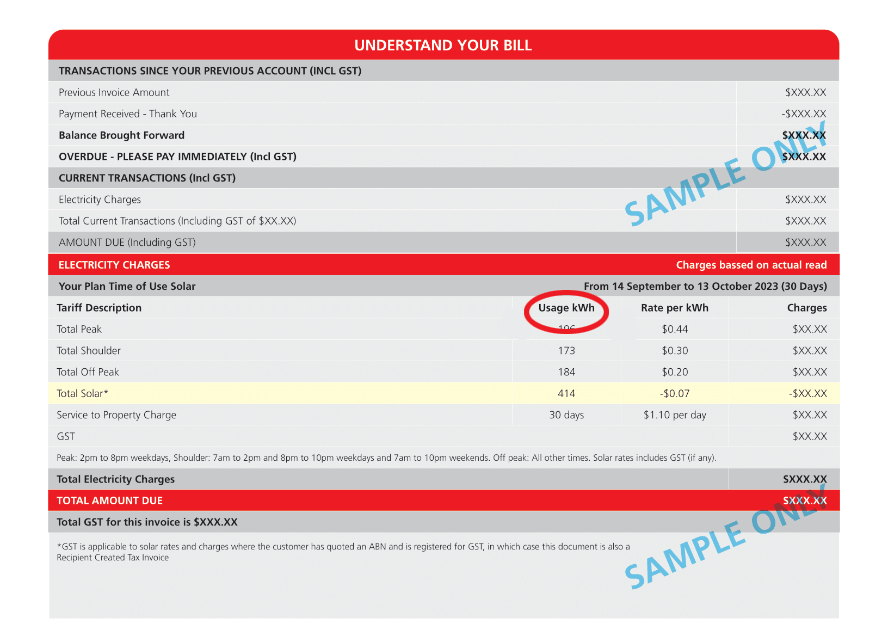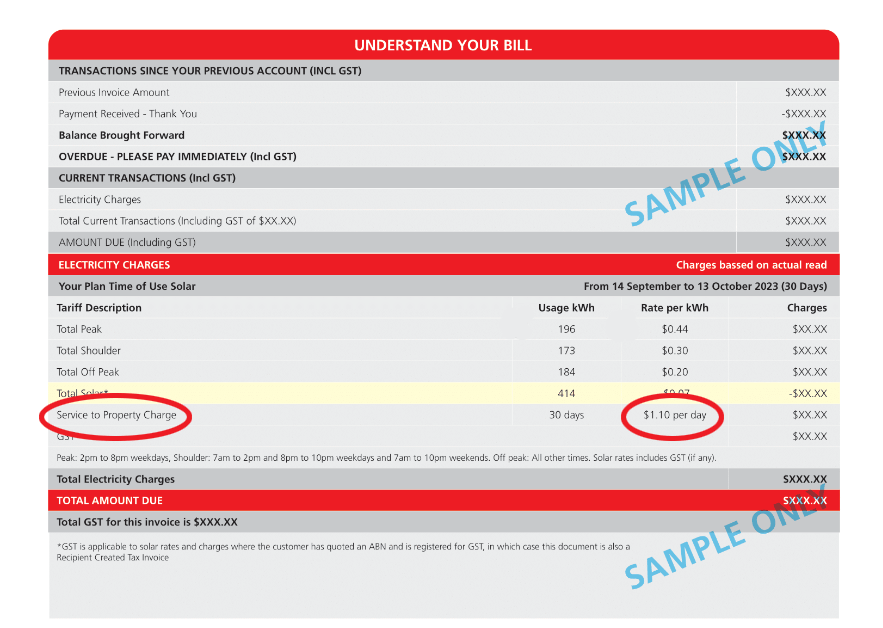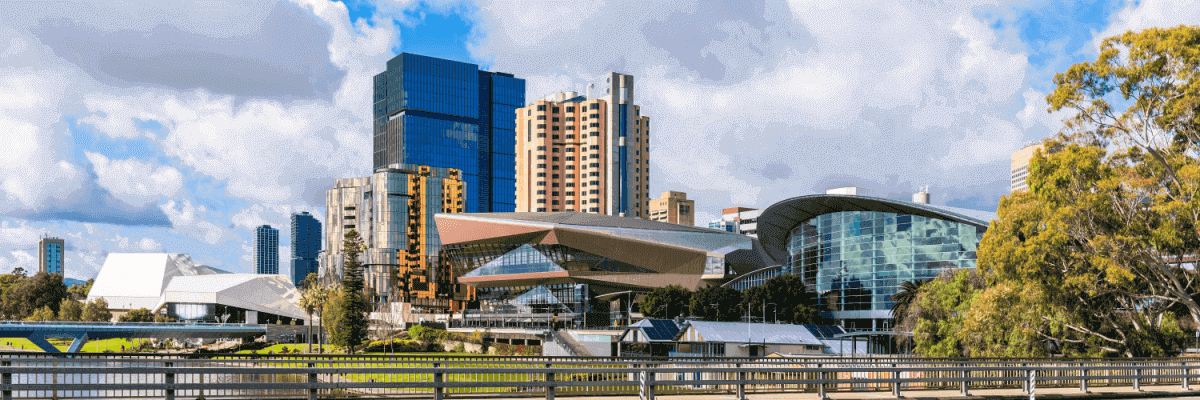The Default Market Offer and retailer pricing in south-east QLD, NSW and SA will change from July 1, 2025.
We’re working to ensure the latest product information is displayed as soon as it’s made available to us by providers.
Please confirm plan information with the provider before making a decision.
KEY POINTS
- In SA, there are four types of tariffs: single rate, demand, controlled load and feed-in tariffs.
- A tariff refers to the pricing structure for the energy you consume.
- Homes with solar panels are eligible for a feed-in tariff, which rewards them with credits for energy exported back to the grid.
Compare energy deals in South Australia
Here are some of the cheapest published deals from the retailers on our database that include a link to the retailer’s website for further details. These are products from referral partners†. These costs are based on the SA Power network in Adelaide but prices may vary depending on your circumstances. This comparison assumes general energy usage of 4000kWh/year for a residential customer on a single rate tariff. Please use our comparison tool for a specific comparison in your area and to see other products in our database that may be available. Our database may not cover all deals in your area. As always, check all details of any plan directly with the retailer before making a purchase decision.
What is an electricity tariff?
An electricity tariff describes how you are charged for electricity. For instance, you may be charged the same rate for all usage, or different rates depending on how much power you have used – both are examples of tariffs. Before continuing to discuss tariffs, it’s important to understand two key elements of your bill: supply charges and usage charges.
- Supply charges: This is a daily fixed cost for staying connected to the electricity grid. Customers in SA are typically charged anything from $0.90 to $1.50 a day.
- Usage charges: This charge reflects the cost of the electricity you actually use. In SA, this is usually about 35c to 45c per kWh of electricity consumed. For context, a typical large Australian household consumes around 18/kWh per day.
Four residential electricity tariffs are available to South Australian households:
Single rate tariff
A single rate tariff, otherwise known as a ‘single rate’, ‘flat rate’, ‘domestic’, ‘peak’ or ‘anytime’ tariff is currently the most common among South Australian residential customers.
On this tariff, the price you pay for electricity will typically change depending on how much electricity is used. Often, but not always, the price of electricity increases with each block of usage.
The table below illustrates an example of how this tariff works. In this case, separate rates are charged for the first 11kWh, the next 14kWh and all remaining usage.
Keep in mind that other retailers may have more or less usage blocks. In fact, some retailers opt for the same price for all usage. Some energy companies also apply ‘summer rates’ and lower ‘non-summer’ rates to reflect increased electricity demand across different times in the year.
← Mobile/tablet users, scroll sideways to view full table →
| Blocks | Price |
|---|---|
| First 11kWh usage per day | 41c/kWh |
| Next 14kWh usage per day | 43c/kWh |
| Remaining usage per day | 47c/kWh |
An example of South Australia electricity usage pricing structure.
Single rate tariff costs
Here is an example of what SA households can expect to pay if they are on a single rate tariff.
Here are some of the cheapest published deals from the retailers on our database that include a link to the retailer’s website for further details. These are products from referral partners†. These costs are based on the SA Power network in Adelaide but prices may vary depending on your circumstances. This comparison assumes general energy usage of 4000kWh/year for a residential customer on a single rate tariff. Please use our comparison tool for a specific comparison in your area and to see other products in our database that may be available. Our database may not cover all deals in your area. As always, check all details of any plan directly with the retailer before making a purchase decision. The next three tabs feature products exclusively from AGL, EnergyAustralia and Origin.
Here are the AGL Energy plans on our database for South Australia. These are products from a referral partner†. These costs are based on the SA Power network in Adelaide but prices may vary depending on your circumstances. This comparison assumes general energy usage of 4000kWh/year for a residential customer on a single rate tariff. Please use our comparison tool for a specific comparison in your area and to see other products in our database that may be available. Our database may not cover all deals in your area. As always, check all details of any plan directly with the retailer before making a purchase decision.
Here are the EnergyAustralia plans on our database for South Australia. These are products from a referral partner†. These costs are based on the SA Power network in Adelaide but prices may vary depending on your circumstances. This comparison assumes general energy usage of 4000kWh/year for a residential customer on a single rate tariff. Please use our comparison tool for a specific comparison in your area and to see other products in our database that may be available. Our database may not cover all deals in your area. As always, check all details of any plan directly with the retailer before making a purchase decision.
Here are the Origin Energy plans on our database for South Australia. These are products from a referral partner†. These costs are based on the SA Power network in Adelaide but prices may vary depending on your circumstances. This comparison assumes general energy usage of 4000kWh/year for a residential customer on a single rate tariff. Please use our comparison tool for a specific comparison in your area and to see other products in our database that may be available. Our database may not cover all deals in your area. As always, check all details of any plan directly with the retailer before making a purchase decision.
How to save on a single rate tariff
A single rate tariff can vary in both its structure and rates from energy retailer to energy retailer, making it a bit tricky to compare prices.
As seen above, Canstar Blue has a convenient energy price comparison tool. However, you can also check each retailer’s energy price factsheets.
Look at the number and size of usage blocks when comparing retailers in South Australia, as picking the wrong pricing structure for your home could be costly.
The nature of pricing blocks like this means the electricity provider that works out cheapest for one type of household may not be the cheapest option for another household with different usage habits.
If you don’t use much power, look for plans with the cheapest initial usage blocks. If you use lots of power, pay particular attention to the costs of higher usage blocks.
Demand tariff
Demand tariffs are a new type of tariff designed to better reflect customer needs and the impact this may have on the network.
Customers are charged a low flat rate for electricity usage, plus the standard supply charge. In addition, customers receive a ‘demand charge’. This daily charge reflects your peak electricity usage within a 30 minute period during peak hours.
Here is an example of how it works. A household is charged a typical demand charge of 40c/kw/day. At one point during peak hours, the household runs the TV, fridge, clothes dryer and electric oven, causing the household’s electricity usage to spike to 3kWh.
On top of its standard charges, the household is also charged 120 cents per day in demand charges (3kWh x 40c).
Demand tariffs typically have lower usage and supply rates, meaning customers can save with demand tariffs.
That said, customers who can’t minimise peak hour electricity usage will have a demand charge that could leave them paying a lot more for power.
Keep in mind that higher demand rates may be charged in summer periods compared to ‘non-summer periods’.
Controlled load tariff
A controlled load tariff is a unique type of tariff that meters large appliances separately from the rest of the home.
For example, a controlled load tariff may apply to your hot water system, slab heater or other large appliance, while the standard single rate tariff applies to all other electricity usage.
Controlled load rates are much lower than general usage rates, meaning customers can save considerably on electricity usage.
Nominated appliances on controlled load tariffs only receive electricity supply during off-peak hours, usually between 1am and 6am.
This limited supply means that a controlled load tariff is only suitable for a handful of appliances, such as electric hot water systems, heat slabs and pool pumps.
A controlled load tariff can be a great way to save money, so long as you’re comfortable with relegating electricity supply to off-peak hours.
Feed-in tariffs
A feed-in tariff (FiT) refers to an arrangement in which customers receive credits for unused solar power.
When solar panels produce electricity, but no one is around to use it, that electricity is automatically fed into the shared energy grid for someone else to use.
In exchange, your retailer credits you for each kWh of electricity your solar system exports. Most retailers will offer between 5c and 10c for each kWh of solar power exported.
If you have solar panels, be sure to consider what feed-in tariffs are available when comparing retailers.
Electricity rates South Australia
The following table shows the general usage rates and daily supply charges of the South Australian electricity providers on our database.
We list the rates of some of the cheapest published deals from each company on our database. Rates are for single-rate tariffs only. Use our comparison tool for specific rates in your area.
← Mobile/tablet users, scroll sideways to view full table →
| Electricity provider | Electricity plan | General usage rate | Daily supply charge | |
|---|---|---|---|---|
| AGL | Residential Smart Saver | 44.56¢/kWh | 110.35¢/day | |
| Alinta Energy | HomeDeal Essential | 44.76¢/kWh | 120.89¢/day | |
| Amber Electric | Standing Offer: Fixed Rate | 40.07¢/kWh | 109.10¢/kWh | |
| CovaU Energy | Basics Residential Single | 43.34¢/kWh | 130.68¢/kWh | |
| Diamond Energy | Everyday Renewable Saver | 47.32¢/kWh | 92.90¢/day | |
| Dodo | Standing Offer | 39.64¢/kWh | 187.82¢/day | |
| EnergyAustralia | Flexi Plan | 46.18¢/kWh | 124.30¢/day | |
| Energy Locals | Home Classic | 36.00¢/kWh | 127.00¢/day | |
| Engie | Engie Perks | 46.07¢/kWh | 125.34¢/day | |
| GloBird Energy | GloSave Residential | 39.05¢/kWh | 115.50c¢/day | |
| Kogan Energy | Kogan Energy With Free First | 39.78¢/kWh | 116.93¢/day | |
| Lumo Energy | Lumo Basic | 42.93¢/kWh | 100.96¢/day | |
| Momentum Energy | Warm Welcome | 35.31¢/kWh | 166.21¢/day | |
| Nectr | 100% Clean | 43.62¢/kWh | 146.10¢/day | |
| Origin Energy | Go Variable | 43.86¢/kWh | 105.57¢/day | |
| OVO Energy | The One Plan | 41.80¢/kWh | 118.80¢/day | |
| Pacific Blue | Blue Home | 45.35¢/kWh | 108.90¢/day | |
| Powershop | Power House | 41.87¢/kWh | 116.93¢/day | |
| Red Energy | Living Energy Saver | 42.93¢/kWh | 106.70¢/day | |
| Sumo | Standing Offer | 46.00¢/kWh | 118.93¢/day | |
| Tango Energy | Home Select | 45.35¢/kWh | 108.90¢/day | |
| 1st Energy | 1st Saver – Single Rate | 45.98¢/kWh | 122.10¢/day | |
| Basic Plan Information Documents | ||||
Rates and products are subject to change. Accurate as of July 2025.
Electricity usage costs (per kWh) in South Australia
Energy costs are broken up into separate components on bills, one of which refers to how much power you’ve used over the billing cycle.
Electricity usage costs are the rates you’re charged for consuming energy. If air conditioning is a must at your place, then you’ll want to know how much you’re being slogged to use power.
In South Australia, you can expect to pay around 35 to 47 cents per kilowatt hour (kWh), although cheaper usage rates may be available.
Where are usage rates found on a bill?
Usage rates are typically located in the section where your retailer lists each charge. Keep in mind that different energy providers may list usage charges under another name, like ‘peak usage’.

Electricity supply costs in South Australia
Much like you’re billed for using electricity, you’re also charged for being supplied power in the first place, known as supply costs.
In South Australia, supply rates vary, but expect to pay around $1 to $1.20 per day.
Electricity supply charges will take up a large chunk of bills, particularly if your house does not use much power.
Where are supply costs found on my bill?
Supply costs are usually found next to your usage rates on the summary section of your energy bill.
In this example, this rate is referred to as a ‘service to property charge’, but keep in mind it may be under a different name depending on the retailer.

How to find a deal with cheap electricity rates in South Australia
With more than 20 retailers to choose from, the South Australian energy market has never looked healthier.
Given the cost of electricity, it has never been a better time to review your current energy plan’s rates.
Our free comparison tool lets you compare electricity rates among many other features, helping you narrow down a deal that’s best suited to your circumstances.
Original reporting by Jared Mullane
Image Source: myphotobank.com.au/Shutterstock.com



Share this article